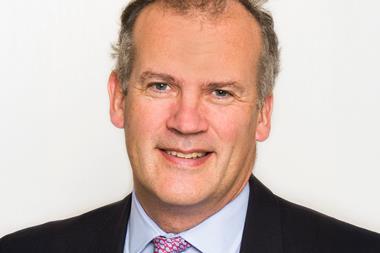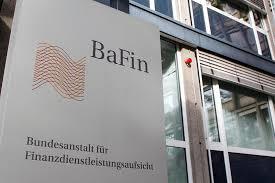The Investmentmodernisierungsgesetz (InvModG – Act modernising investmentfund regulation) was set on its way in order to mirror the changes in the UCITS III Directive within the German investment law.
This presented an opportunity that was taken, to replace the KAGG law in place since 1957 and the AIG law since 1969, through a new Investment Act and Investment Tax Act. These also implemented some ideas independent of the UCITS directive.
Among the most important of these are the inclusion of hedge funds and the regulation of the investment company (InvAG), which has a company type structure, like an OIEC or the SICAV and SICAF). The InvAG can be set up as open end or as closed end fund. Since hedge funds do not use the hedging instruments to hedge from risk but to increase risk, the German law choose the expression ‘Investment fund with additional risks’. And when setting up the rules for these funds the law had to solve a particular conflict of interest.
On one hand the intention was to make Germany a suitable place for setting up hedge funds (HFs), and this would only be possible by giving the hedge fund managers the utmost freedom.
On the other hand, the private and less experienced investor had to be shielded from too risky products. These somehow conflicting objectives are pursued in the following rules:
o A differentiation is made between so called ‘Single-hedge funds’ and ‘Fund of Hedge Funds (FOHF). Public marketing is allowed only for FoHF. Single-HFs may be sold by private placement (direct approach of distributors to existing clients).
o A HF is only a HF if the terms of contract or the statutes allow at least leverage or short sales. This is to prevent ordinary funds (such as bond funds) being set up as HFs just to avoid the tighter rules on risk diversification (5/10/40%) that would be applicable to UCITS.
o Single-HF need not to respect the rules on risk diversification (5/10/40% -rule) as other funds have to; it is sufficient to respect the general idea of risk diversification.
o Single-HFs are allowed to leverage their market exposure without limitation. Eventually the Ministry of Finance (BMF) could issue a regulation on the details.
o Single-HFs are, in contrast to UCITS, allowed to make short sales without limitations. Eventually the BMF could issue a regulation on details.
o Single-HFs are free to choose any strategy.
The law gives a list of strategies as follows, but this is to provide examples only and is not comprehensive:
o Relative value/arbitrage-strategies as convertible bond arbitrage, fixed income arbitrage, long/short equity, option arbitrage, and event driven-strategies, directional strategies as future strategy, global macro, emerging markets, and strategies in combination of arbitrage – and directional strategies.
o The terms of contract and statutes of an HF need authorisation from the financial supervisor, the BaFin, for both Single-HFs and FoHF. Also Spezialfonds need that prior authorisation while any other Spezialfonds can be set up without any delaying procedure.
o HFs may trade with any kind of assets that are eligible for UCITS, and in addition they can trade with derivatives on commodities and precious metals.
o HFs must not trade directly in commodities since they never could manage a physical delivery of goods.
o HFs must not trade in real estate. This is to prevent players in the so called ‘grey capital markets’ using an InvAG as a disguise.
o HFs may invest up to 30% of their NAV in non-listed participations of enterprises. This rule allows setting up “Beteiligungs-Sondervermögen” (participations funds) as it has been allowed since 1987. No such fund has ever been set up because the KAGs were not willing to do the necessary credit-oriented due diligence in the target companies. And now the limit is likely to prevent real private equity venture capital funds being set up as German HFs. Preventing this is exactly the intention of the law.
o As FoFH invest in shares of different HFs, the limit is 20% of the FoHFs NAV in one and the same HF. Compared with a normal FoF, the FoHF may buy 100% of the target HF, but the target HF must not be a FoHF. This is to prevent ‘cascade-funds’ such as happened with the IOS scandal. And the target funds must not originate from countries not cooperating in the war against money laundering (see the website www.oecd.org/fatf/NCCT_en.ht)
o Like UCITS, the principle of the depository bank also applies to HF. But different to UCITS it is permitted to outsource important activities of the depository bank to other institutions, eg the custody of the fund’s assets. This is to reduce the identified competitive advantage of foreign HFs that often do not have a depository bank within the provisions of the UCITS Directive.
o KAGs have to obey an express legal obligation to address conflicts of interest. They are required to avoid these conflicts of interest, and, where this is impossible, they have to find a solution in line with investors’ interests.
o Taxation of HFs and their investors follows the same rules applicable to UCITS. The fund itself is not taxed; the investor is taxed on certain parts of the fund’s income. So interest income is taxable, distributed or not. The same applies to ‘other income’, and this includes received premiums when the fund manager is writing options. The BMF is aware that this is a problem and is evaluating possible solutions. The fund’s dividend income remains untaxed. Capital gains of the fund are only taxed upon distribution. And of course the investor may be taxed on his capital gains when redeeming the fund’s shares.
o Hedge funds can be set up as Sondervermögen (with assets separated from the management company’s assets, similar to a unit trust in the UK or a FCP) or as a open ended or a closed ended company “Investmentaktiengesellschaft” (similar to a OIEC or a SICAV/SICAF) see table below.
o HFs and FoHF have to disclose the information that is necessary to assess the taxation of the investors, and they have to publish UCITS-like annual and half-annual reports. Institutional investors have been somewhat reluctant to invest in hedge funds. One reason may be that this alternative asset class was only accessible via direct investment in foreign and remote structures, or via more or less intransparent HF-certificates not supervised by a financial authority.
Recent studies show a huge interest from insurance companies and other institutional investors in the hedge funds-vehicles newly admitted by the new German investment law. The reason for their rising interest may be in the first place that the smell of the grey capital market is removed from the HFs concept by promoting this asset class enshrined in Investmentgesetz. This fact will allow the investor or their investment people to explain and defend an investment in HFs to a board or shareholders.
When choosing between the hedgefund, the FoHF and the HF-certificate, the tax free dividends and capital gains on equity favour of the fund, while the taxation of ‘other income’ may be against the fund. But more important for most investors is the regulation and greater transparency the investors will find only with the funds. Therefore there is a high probability that institutional investors will overcome their reluctance and dedicate an appropriate part of their assets to this asset class via German hedgefunds.
Till Entzian is a lawyer and consultant on investment funds based in Frankfurt




























No comments yet